Explore æģ²„³ÉČĖ Science units and lesson overviews
æģ²„³ÉČĖ Kā8 Science provides comprehensive, standards-aligned science curriculum units and lesson plans for
grades Kā8. Engage your students in hands-on investigations, literacy-rich activities, and interactive digital tools to cultivate scientific inquiry and critical thinking.
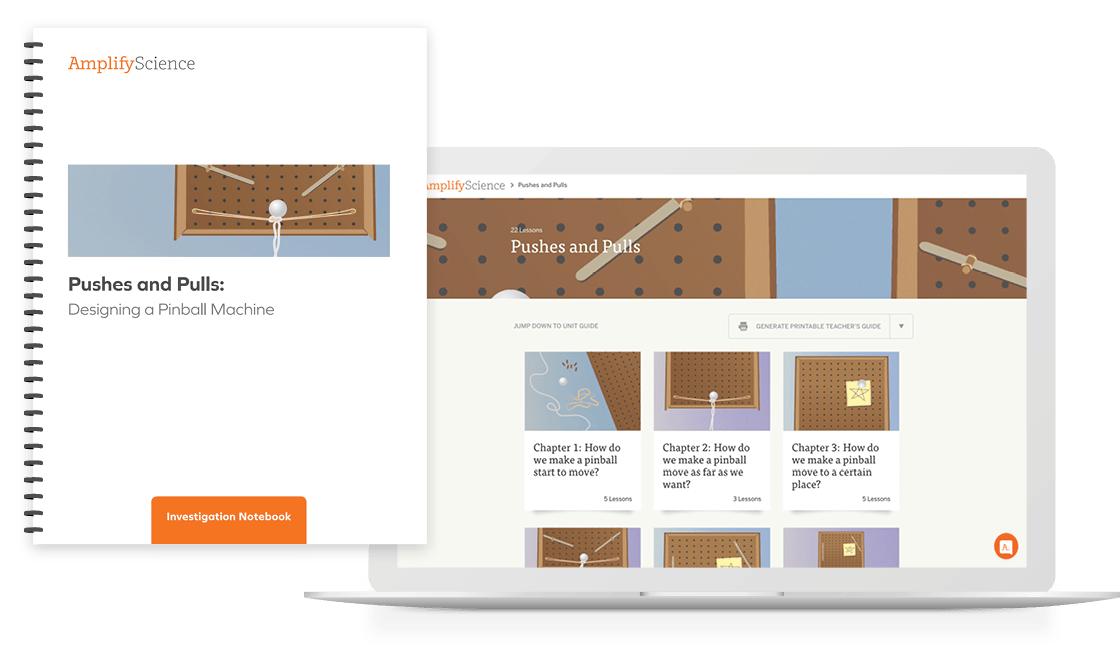
Pushes and Pulls
How can we create a pinball machine for our class?
Students take on the role of pinball engineers as they investigate the effects of forces on the motion of an object. They test their own prototypes (models) of a pinball machine and use what they learn to contribute to the design of a class pinball machine. Over the course of the unit, students construct a foundational understanding of why things move in different ways.
Explore lessons

In this lesson:
Students begin gathering information to answer the Investigation Question: What makes an object start to move? They engage in exploring the classroom for objects they can make start moving.
Students start developing language to explain movement.
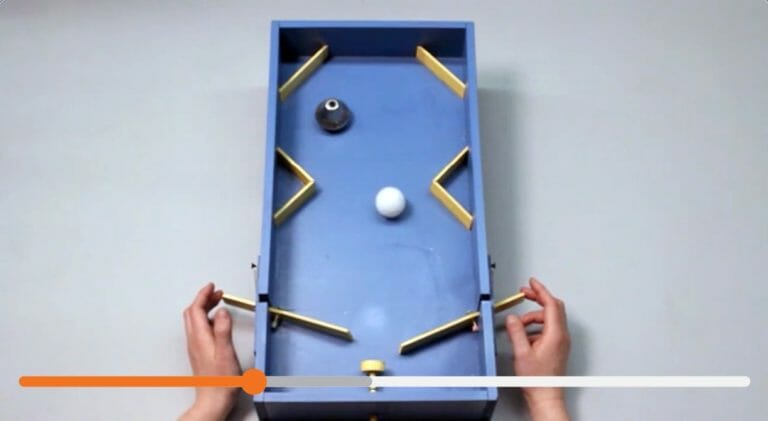

In this lesson:
Students play a game called Rugball to continue exploring ways to make an object start to move.
Students look at images of movement, including examples of animals and machines, and discuss what they visualize with a partner.
Students discuss pushes and pulls.
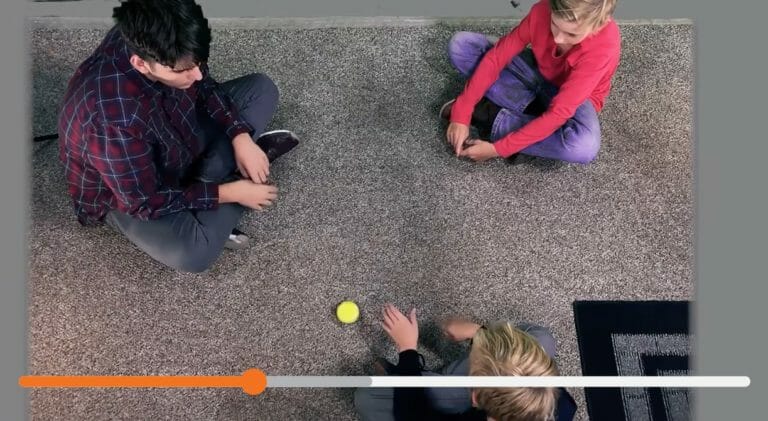

In this lesson:
The class creates the first section of the What We Know About Forces chart.Ā
A hands-on investigation of various objects allows partners to engage in discovering what is needed to create a force between objects.
Students are formally introduced to the key concept that a force happens between two objects.
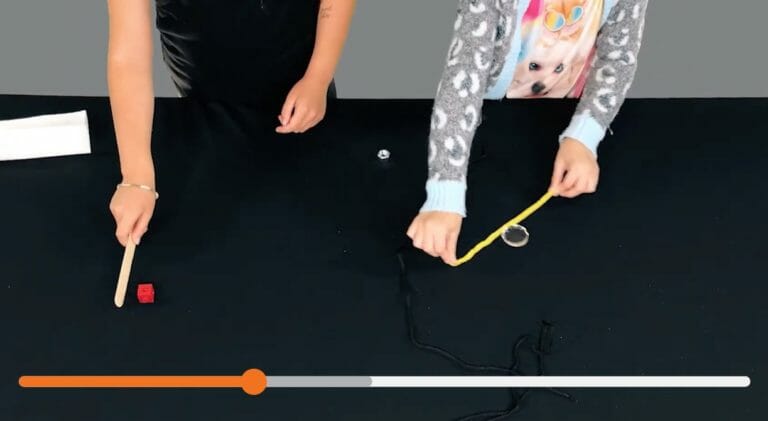

In this lesson:
Students add to the What Engineers Do chart. They add the Learn phase to a visual representation of the design cycle.
An introduction to the Pinball Machine Design Goals chart supports the engineering work students will do when designing a pinball machine.
Students use the Box Model and a rubber band to meet the first design goal: Make the pinball start to move.
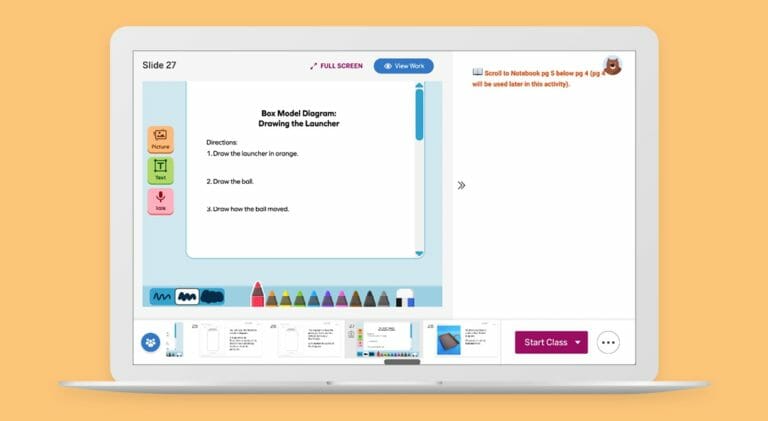

In this lesson:
Students reflect on their work as engineers so far by constructing a simple version of the design cycle to the What Engineers Do chart.
Students collectively decide how to add a launcher to the Class Pinball Machine in order to meet the first design goal: Make the ball start to move.
Students learn how to share their observations and explanations.


In this lesson:
Partners gain direct experience moving a ball short and long distances.
By playing Rugball, students practice the language they will need to talk about the difference between the forces necessary to move the ball short or long distances.
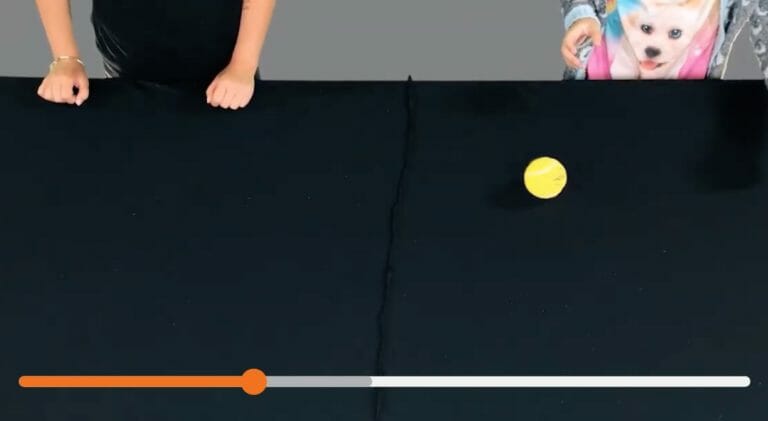

In this lesson:
Students are introduced to the reference book Forces in Ball Games and connect their firsthand experience relating strength of force and distance to the ball games described in the book.
Students play Rugball, this time practicing new scientific language to discuss the reason the rugball moves longer or shorter distances: a gentle force or a strong force is being exerted on it.
Students sort a set of images showing objects moving different distances.
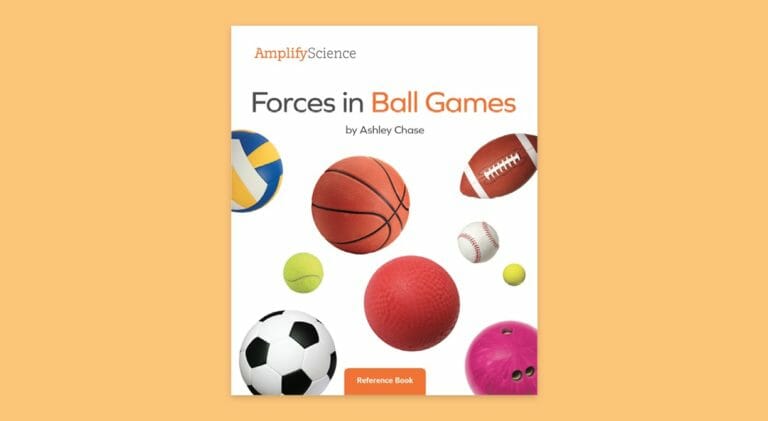

In this lesson:
Students create diagrams of the changes made to their Box Models.
Students refer to the launcher designs in their Box Models to propose and make changes to the Class Pinball Machine.
Students participate in a Shared Writing to answer the Chapter 2 Question by explaining how strong and gentle forces move the pinball different distances.
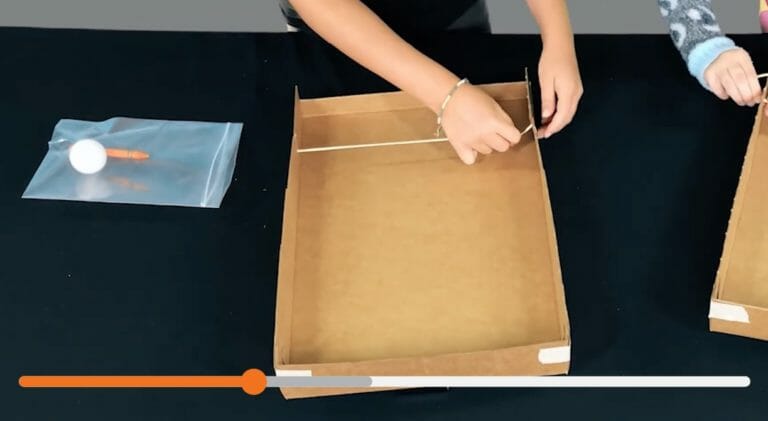

In this lesson:
Students start the investigation by focusing on direction, with a new question: What makes an object start moving in a certain direction?
Students play Rugball with the whole class, passing the ball in different directions and describing what they notice.
Students visualize and discuss the images of construction projects æģ²„³ÉČĖ the book Building with Forces.
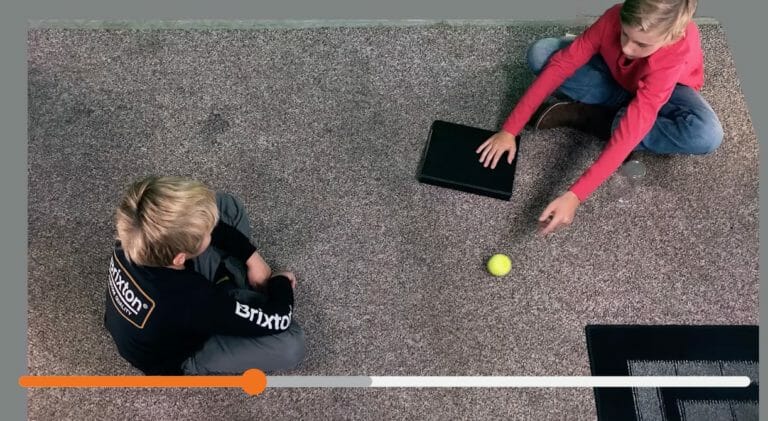

In this lesson:
Students practice using a new Explanation Language Frame with examples of forces depicted in Building with Forces.
Students make changes to their Box Models in order to apply what they have learned about using directional forces to move the pinball to the left and right.
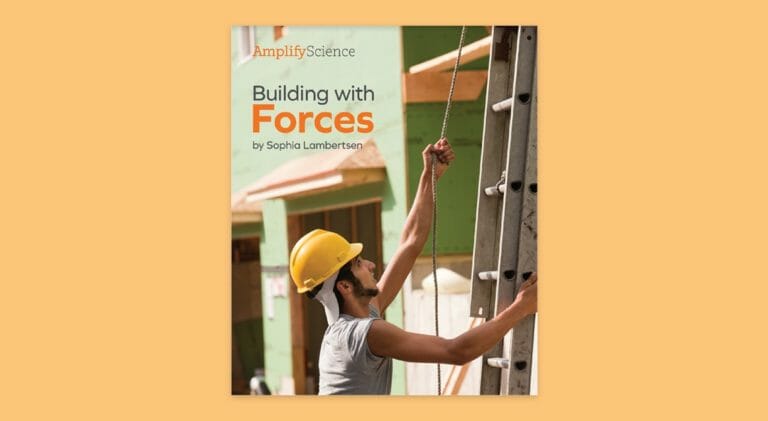

In this lesson:
Students try to move a tennis ball to specific targets placed at varying distances and in varying directions.
Students describe moving a ball to a specific place marked by a target.
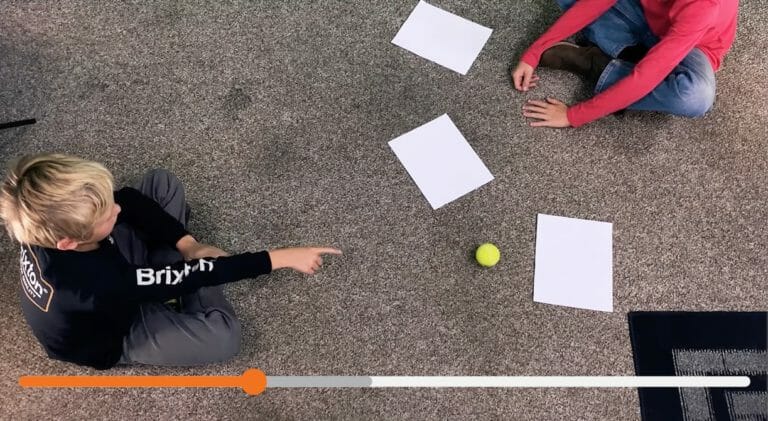

In this lesson:
Students talk about how different strengths and directions of force cause an object to move to a certain place.
Ā Students figure out how to move the ball in their Box Models so that it hits each of four different shaped targets on a new mat.
Students create diagrams to help them make sense of how they made the ball travel a certain distance in a certain direction to hit a target.
Students articulate their understanding of how to make an object move to a certain place.
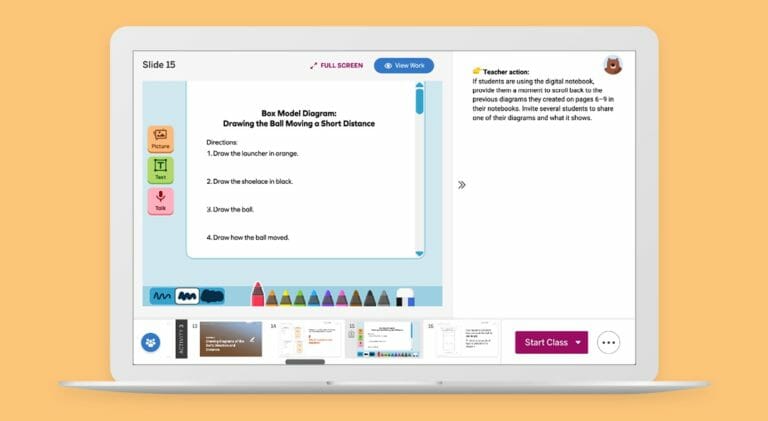

In this lesson:
Students look for evidence of the direction and distance the ball moved to determine the kind of force exerted to move the ball to a certain location.
Students explain what kinds of forces caused the pinball to move to certain targets.
Students browse the photographs in the Forces in Ball Games book, giving them an opportunity to visualize the distance and direction of forces and movement and to apply what they have learned in this chapter to ball games, such as hockey and soccer.
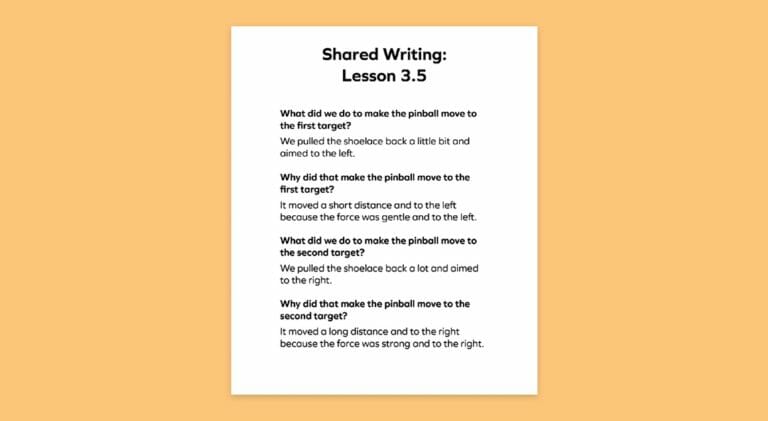

In this lesson:
Students work in pairs to change the direction of a moving tennis ball with classroom objects and their bodies.
Students describe what they have figured out about how a ball changes direction by sharing their discoveries in a game of Rugball.
Students look for examples of balls changing directions in the reference book, Forces in Ball Games.
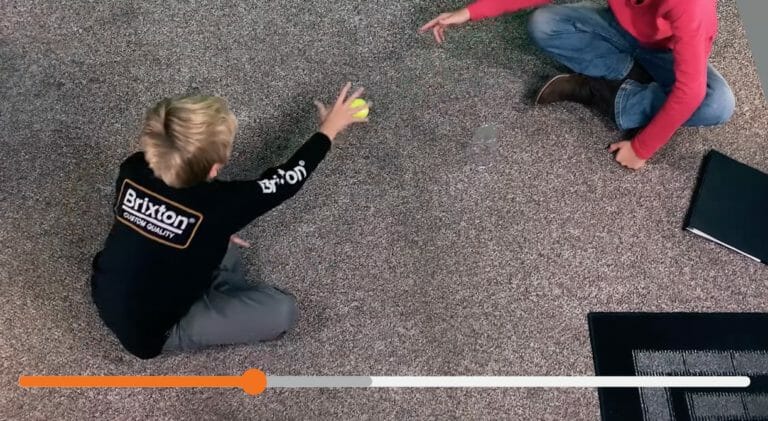

In this lesson:
Students learn more scientific language to describe how an object changes direction due to forces being exerted.
The class engages in changing the direction of the rugball by rolling it toward objects that keep still and objects that move.
Students synthesize and record what theyāve learned about the forces that cause a moving object to change direction by co-constructing a new section of the What We Know About Forces chart.
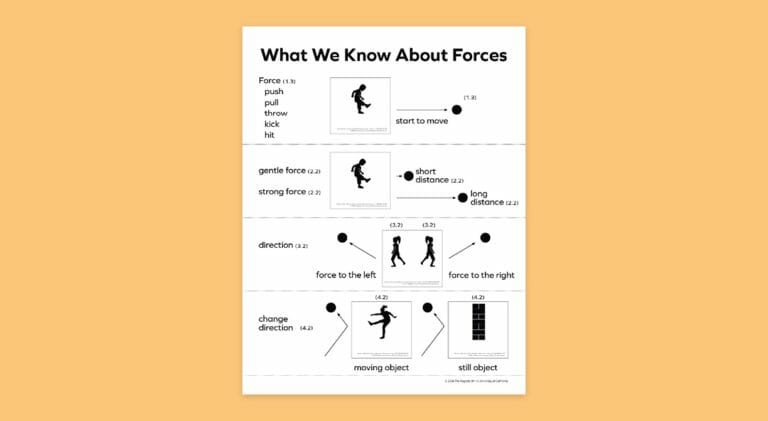

In this lesson:
Students add flippers and a bumper to the Class Pinball Machine in order to meet the design goal.
Students create diagrams of their work on the Box Models in their Investigation Notebooks, which helps them make sense of how the ball changed direction in different ways.
Students use the evidence they have gathered throughout Chapter 4 to explain how to make a pinball change direction.
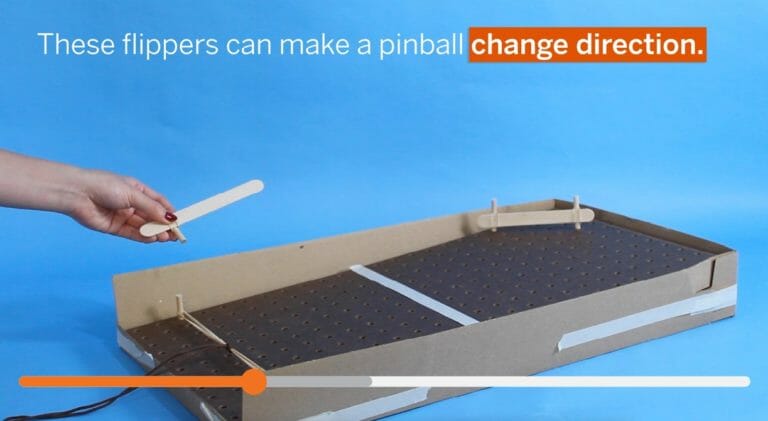

In this lesson:
Students learn how engineers learn about problems and plan solutions by listening to a Read-Aloud of the first half of the book Room 4 Solves a Problem.
Students make plans for designing a pinball machine solution.
Students apply their ideas æģ²„³ÉČĖ their diagram by making the changes in their Box Models.
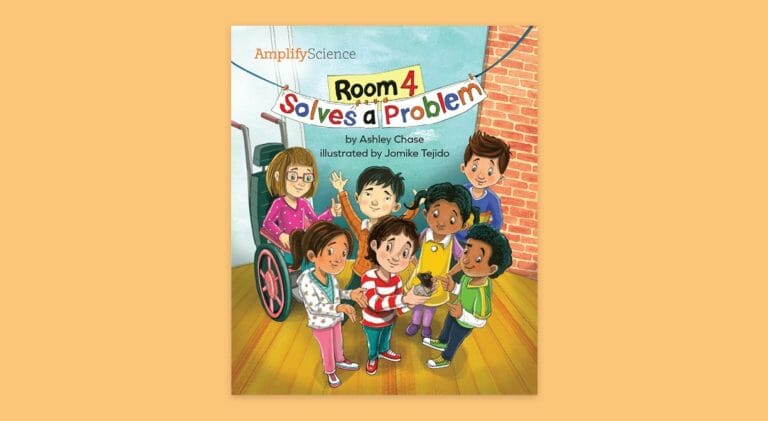

In this lesson:
Students listen to a Read-Aloud of the second half of Room 4 Solves a Problem.
Students use a ball to test all the features they planned and made in their Box Model, making changes along the way.
Students are guided through writing the first two sections of the How to Play Pinball with Forces mini-book.
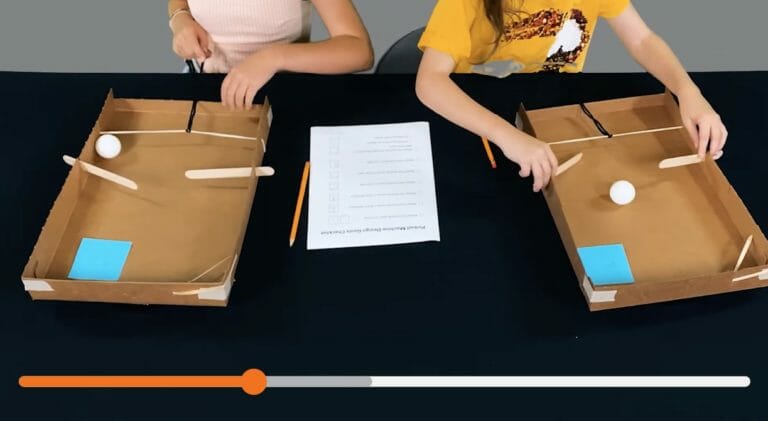

In this lesson:
Students share their Box Models with their peers.
Students write the final section of the mini-book.
Students complete the design cycle a final time by making changes to the Class Pinball Machine.
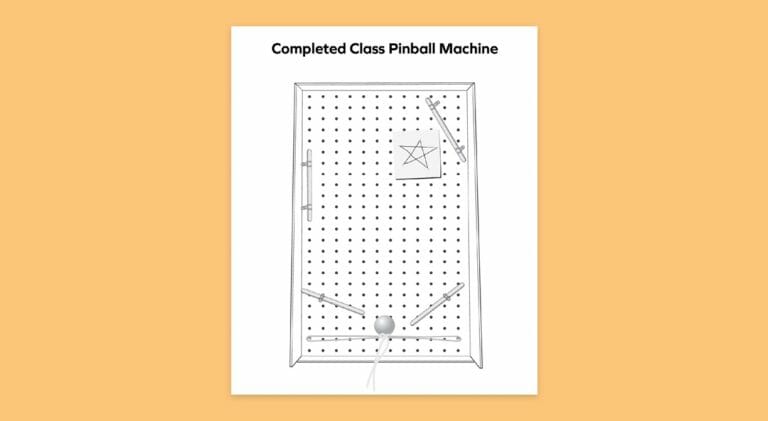

In this lesson:
Students search for evidence of forces in a new book about people in the town of Pushville who do different jobs requiring forces.
The class goes on a tour through the school in search of evidence of forces.
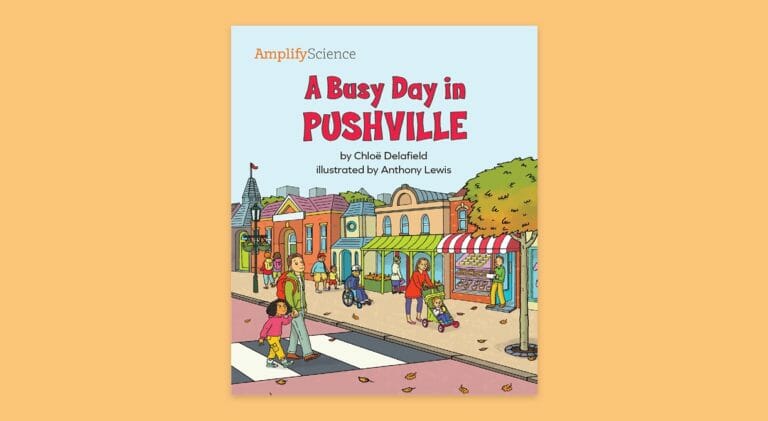

In this lesson:
Students share the evidence of forces they observed and recorded during the School Forces Tour.
During a Shared Reading, partners describe the different kinds of forces.
Students consolidate their understanding of forces and motion by reflecting on artifacts and learning activities.
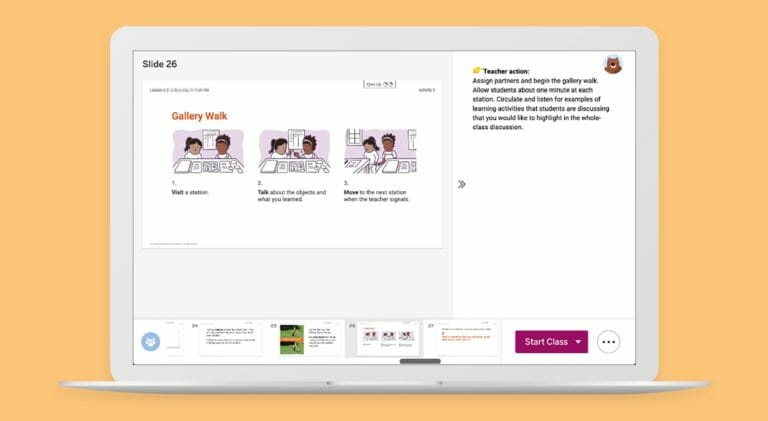

In this lesson:
The teacher meets with students individually and plays the Class Pinball Machine. Students explain how the different movements are caused by different forces and then identify cause and effect.
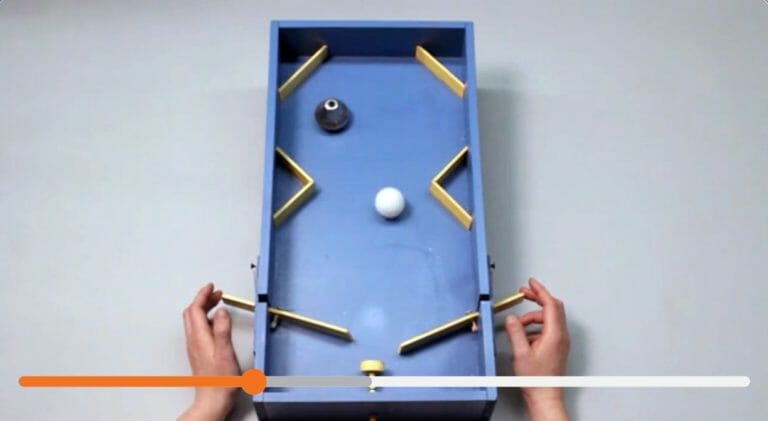
Ready to see more of æģ²„³ÉČĖ Science?
Speak to a representative today.
